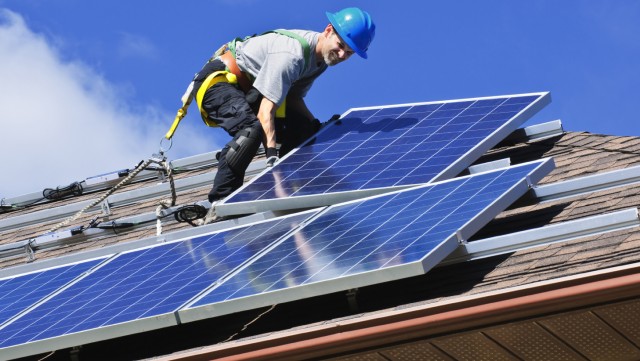Are solar rooftops the next big thing?
South Africa has made an emphatic start in its journey as a renewable energy producer, attracting over R100 billion in investments from foreign and local investors since the Department of Energy signed off 64 wind and solar energy projects in December 2011.
However, panelists at the recently held Thebe-CNBC Africa Renewable Energy Panel Discussion warned that the sharp drop in solar energy tariffs due intense bidding between independent power producers (IPP) to supply the national electricity grid, may result in commercial lenders and IPP shying away from investing in future solar farms. The event was held at the Nelson Mandela Centre of Memory in Houghton, Johannesburg, where the event was recorded and broadcast on CNBC Africa.
Since the advent of renewable energy in South Africa in 2011, average tariffs have dropped from R2,75/kWh in window 1, R1,65/kWh in window 2, a fall of more than 40%, and below R1/kWh in window 3, a further 42% drop.
The reality is that when one investment door closes, another opens. The panelists predicted that the next big thing in renewable energy generation could be the solar rooftop panels industry, which is yet to take off in South Africa like it has in China, Japan, and the US. Solar rooftops hold more promise than the large-scale solar and wind farms that are spread over parts of the Eastern Cape and Northern Cape.
Solar rooftop panels could bring into the market small-scale energy producers and broaden participation in renewable energy generation, create jobs, and most importantly turn South Africa into a manufacturer and exporter of solar rooftop panels in the mould of China.
Early this year, China set a target of building about 14 gigawatts (GW) — equal to the entire electricity output of Finland — of solar power generating projects in 2014, of which 8 GWs is expected to be generated through the rooftop panels and other small installations.
The country is extending subsidies and soft loans to the solar energy industry to encourage manufacturing and installation of solar panels on public buildings including affordable home housing, railway stations, motorway service areas, airports, transportations, major sports venues, parking lots, factories, construction sites and agricultural land. China wants to generate about 100 GWs of solar energy by 2018. Over 80% of the country’s current 26 GWs of existing solar energy come from solar farms.
South Africa can take a leaf out of China’s book and develop its own rooftop panels market. It has to provide tax incentives, subsidies, and adequate funding to encourage investment in manufacturing and installation.
South Africa is decently industrialised and urbanised, presenting plenty of opportunities for homes, buildings, offices, and shopping malls to mount solar panels on their rooftops.


